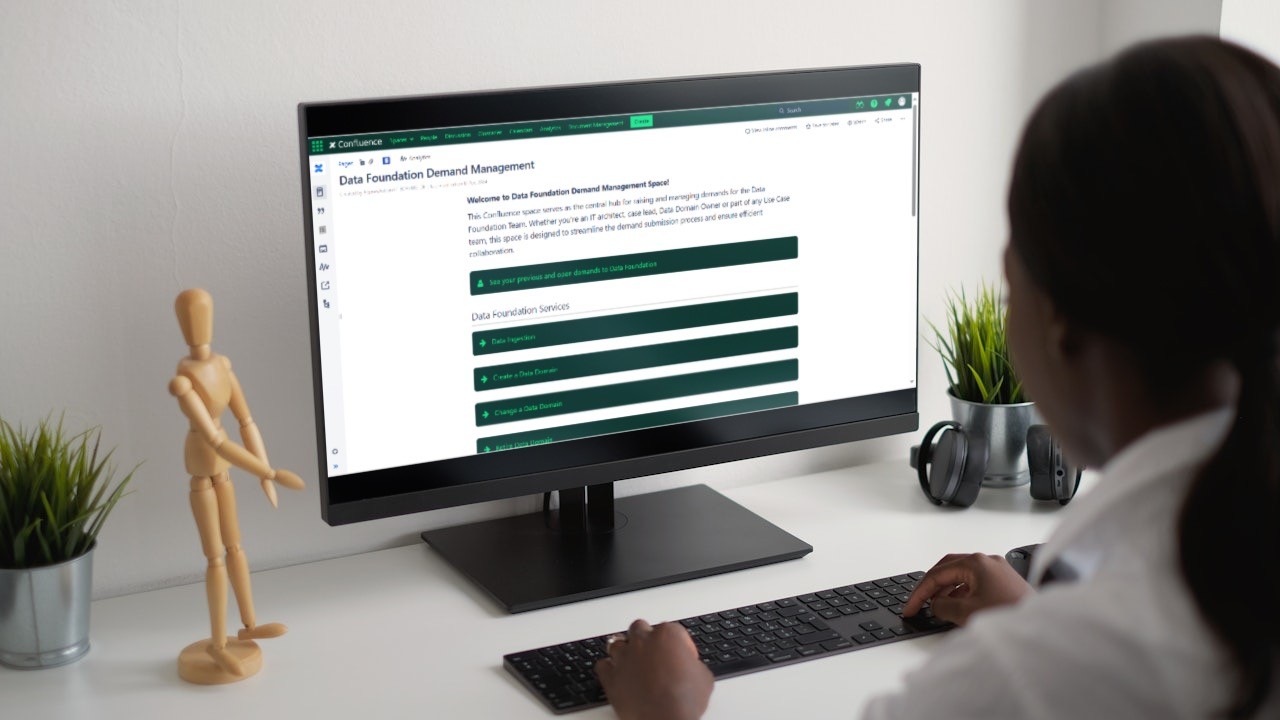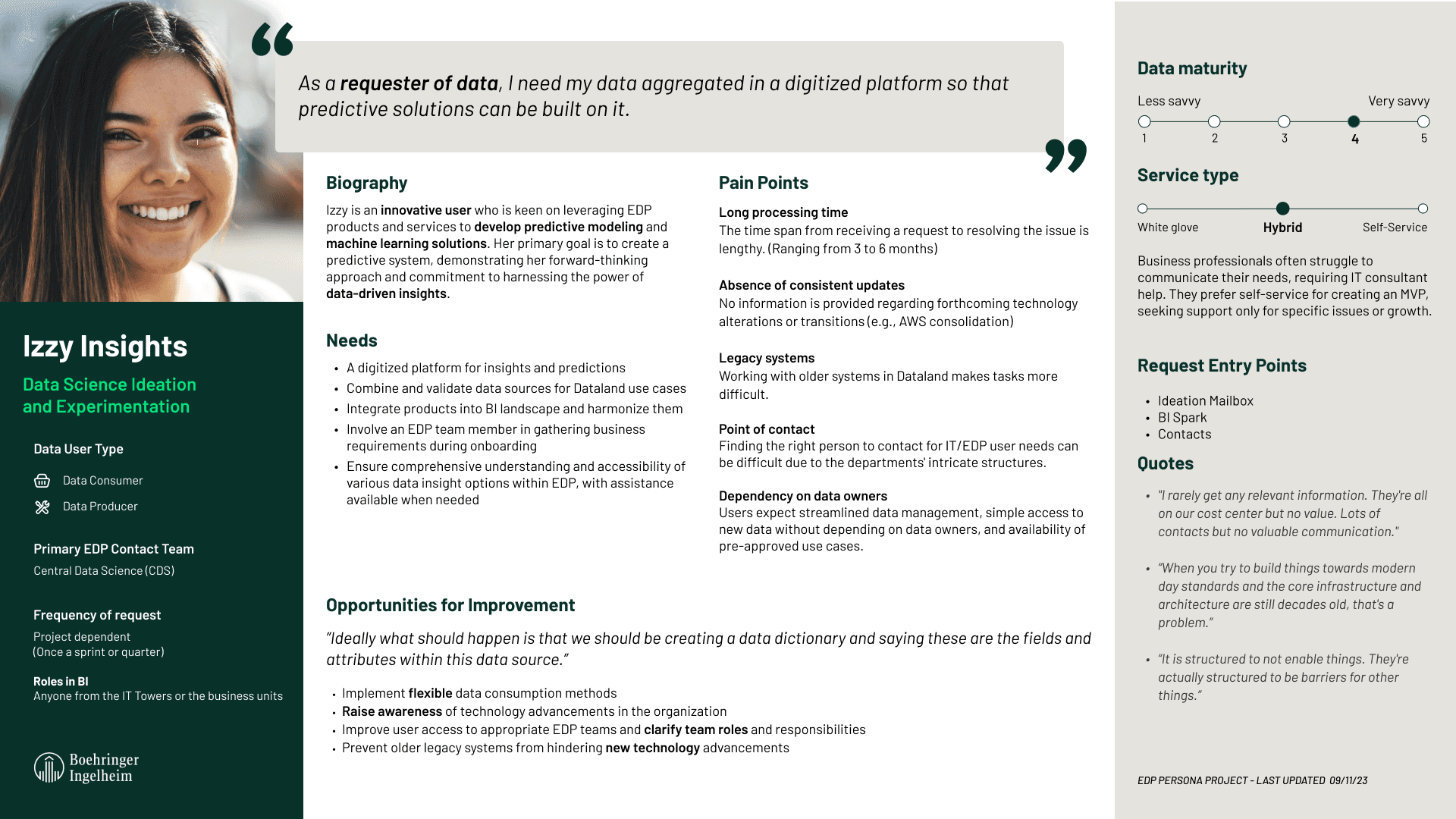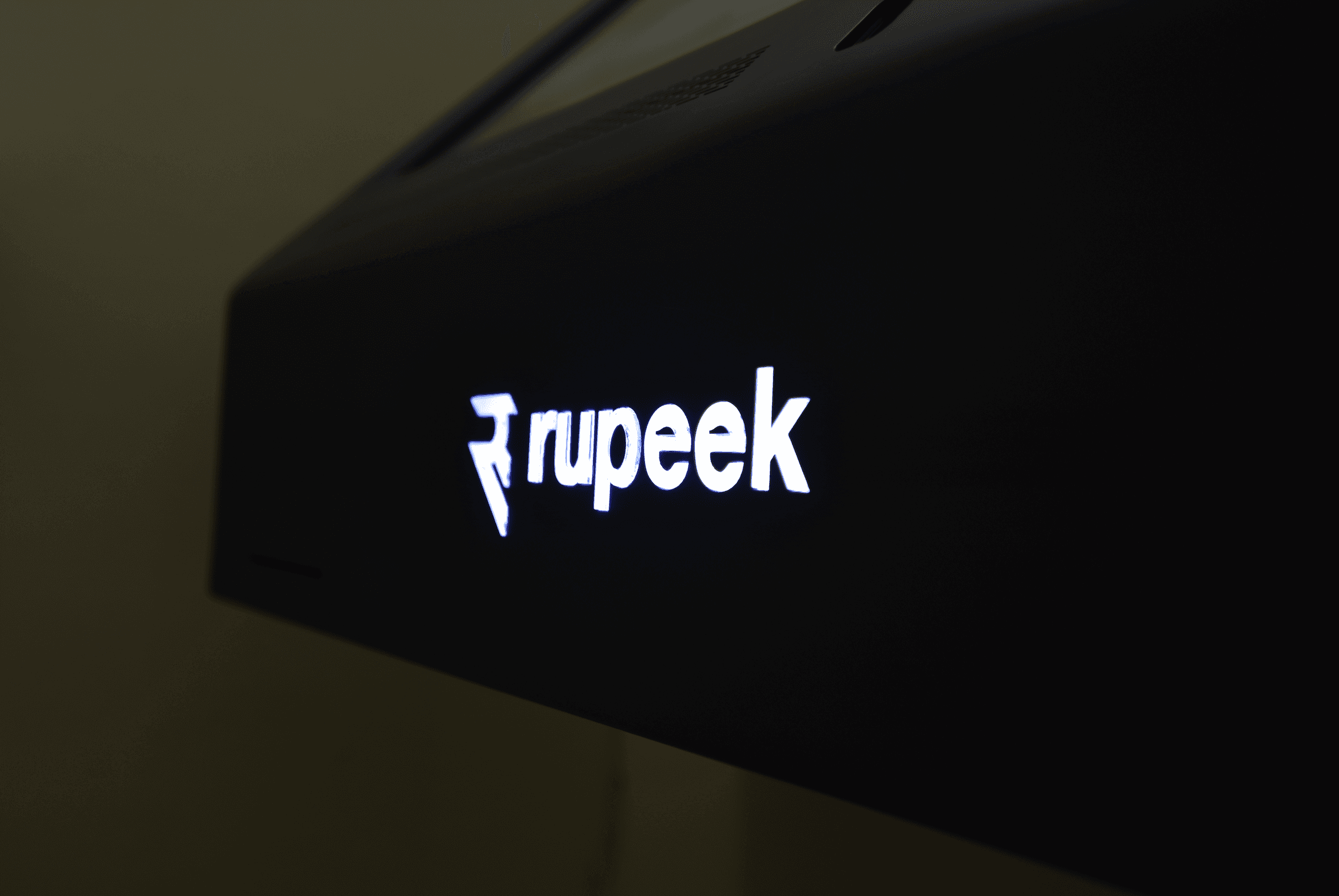Evaluation of the user journey in a data ecosystem at Boehringer Ingelheim
Project Type
Professional project at Boehringer Ingelheim
My Role
UX Researcher
Methods
Semi-structured interviews, stakeholder mapping, journey mapping, prototype mapping, usability testing
Deliverables
Personas, Stakeholder map, Journey maps, Prototypes, Research report
Tools
Figma, Klaxoon, Confluence, MS Teams
01
The Problem
Dataland is a data ecosystem in Boehringer that aimed to provide quick access to large datasets. The Dataland program and its offerings were seen as intricate and overly technical from a user’s point of view. It did not specifically take into account the needs and perspectives of end users when it was designed and built. This resulted in dissatisfaction and misinterpretations regarding Dataland’s capabilities. It was crucial to gain a deeper understanding of Dataland’s users and their requirements.
03
Discovery
Who are our users?
Before we set out to uncover user problems, we discovered that we do not know our target users. The goal of this exercise was not just to identify Dataland personas but to make them actionable. I focussed on understanding how our customers create, consume and share data so that we can deliver quality data solutions for our users that creates business value. I wanted to understand what influences users' decision to use Dataland services and what is their satisfaction level.
Sample Persona
Who are the stakeholders influencing the program and users?
Given the intricate nature of the organizational framework, the initial step was to identify the primary users and stakeholders. To achieve this, I systematically deconstructed the organizational structure. Subsequently, I developed a comprehensive EDP stakeholder map. This mapping exercise effectively showcased a spectrum of products, teams, stakeholders, primary users, and the intricate web of interdependencies among them.
What are the journeys of the personas?
Journey for Customer Acquisition (Demand submission process)
The aim was to understand the overall journey of users entering Dataland, the series of interactions they have with multiple stakeholders and interfaces. The friction points and opportunities to improve customer satisfaction were uncovered.
Findings from journey mapping:
Users feel lost in the Dataland ecosystem. They constantly move back and forth between colleagues for guidance
They need a clearly defined processes for onboarding
Poor usability of the onboarding forms and info pages
Unclarity about most fields in the form
Technical language used for a non-tech audience
White glove service required to submit the demand due to the complexity of the process
04
Ideation and Testing
Improving the user experience of the demand submission process
Process:
Prototype mapping:
Based on the findings gathered from the user journeys, we conducted a workshop to review all the concepts proposed by stakeholders, designers, researchers and determine a solution to bring forward for testing.
Some key questions kept in mind while solutioning:
Where do users naturally look for information?
What helps (links and information) are users looking for and when? At what steps is help needed? How can we integrate help in the process in a way that users notice?
A/B testing:
Prototypes were built for the information and demand submission page and compared with the existing pages. The location of the pages was also reconsidered on the Intranet.
Key indications for success
Task completion
Number of issues
Qualitative feedback in the exit interview
Testing method:
Observation (scenario based), think aloud, A/B testing with current page and prototype
05
Outcomes
Improved UX of a service that enables users to create shareable data products in dataland.
Product team setup enables creating data products in 2 months VS 6months (before)
It is easier for users to start working with the service – easy forms, help materials, dedicated support. Reduce friction and need for hand-holding
Usability of touchpoints
Impact:
Changes implemented for Data Foundation users and scalable for 36 demands in Dataland
50% reduced need for user support
What has improved usability wise:
User is quick to recognize what the page is providing
Quick to find help page, previous demands, contacts
Language matching user understanding, e.g. form fields, services
Provide help on filling form fields
06
Reflections
Advocating for users in a low UX maturity environment
In low UX maturity settings, I’ve driven user advocacy by educating stakeholders, demonstrating impact through insights, and embedding user needs into decision-making. Through storytelling, workshops, and quick wins, I’ve influenced teams to shift from assumption-driven to evidence-based approaches.
Navigating an Enterprise Environment
Enterprise environments often come with complex organizational structures, multiple stakeholders, and lengthy decision-making processes. My experience in such settings has taught me how to navigate cross-functional teams, align diverse perspectives, and balance business priorities with user needs. I have learned to tailor my communication strategies, distilling research insights into actionable recommendations that resonate with leadership while ensuring execution teams have detailed guidance.


